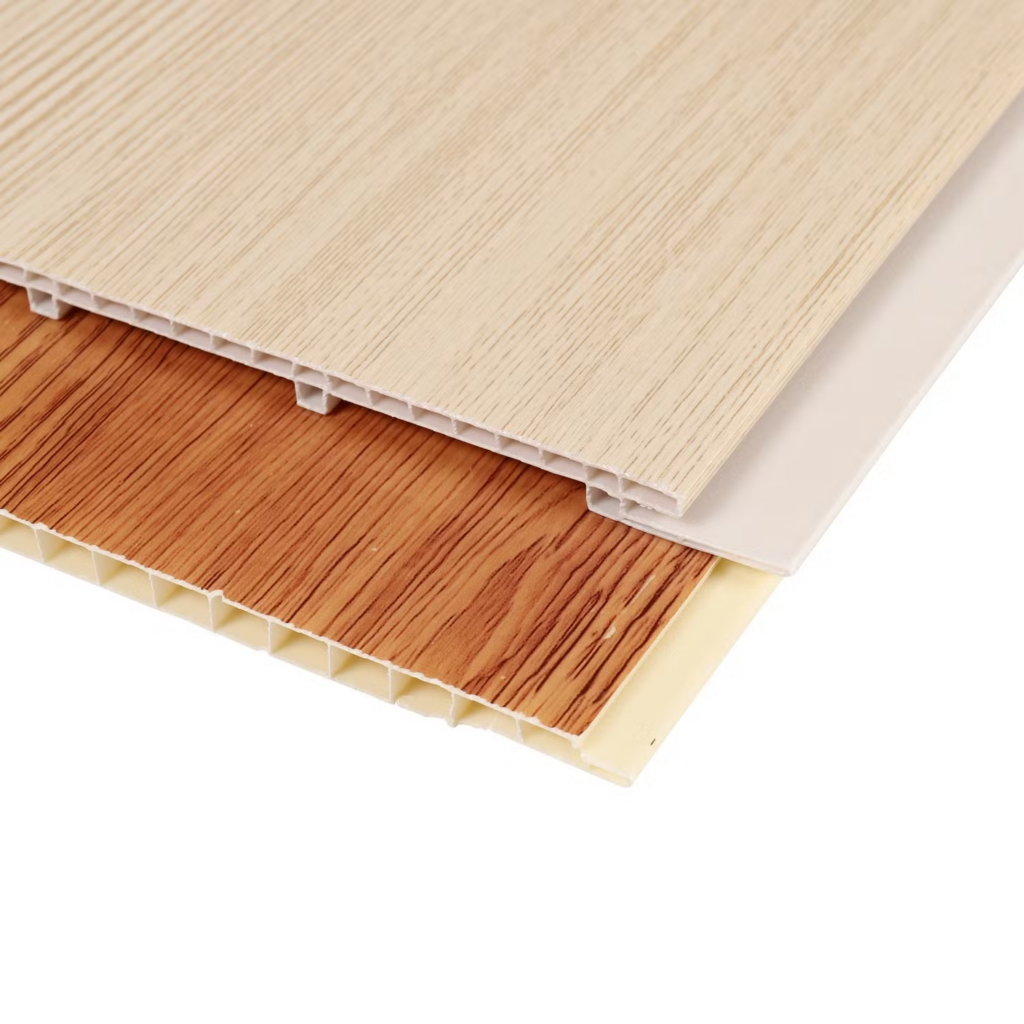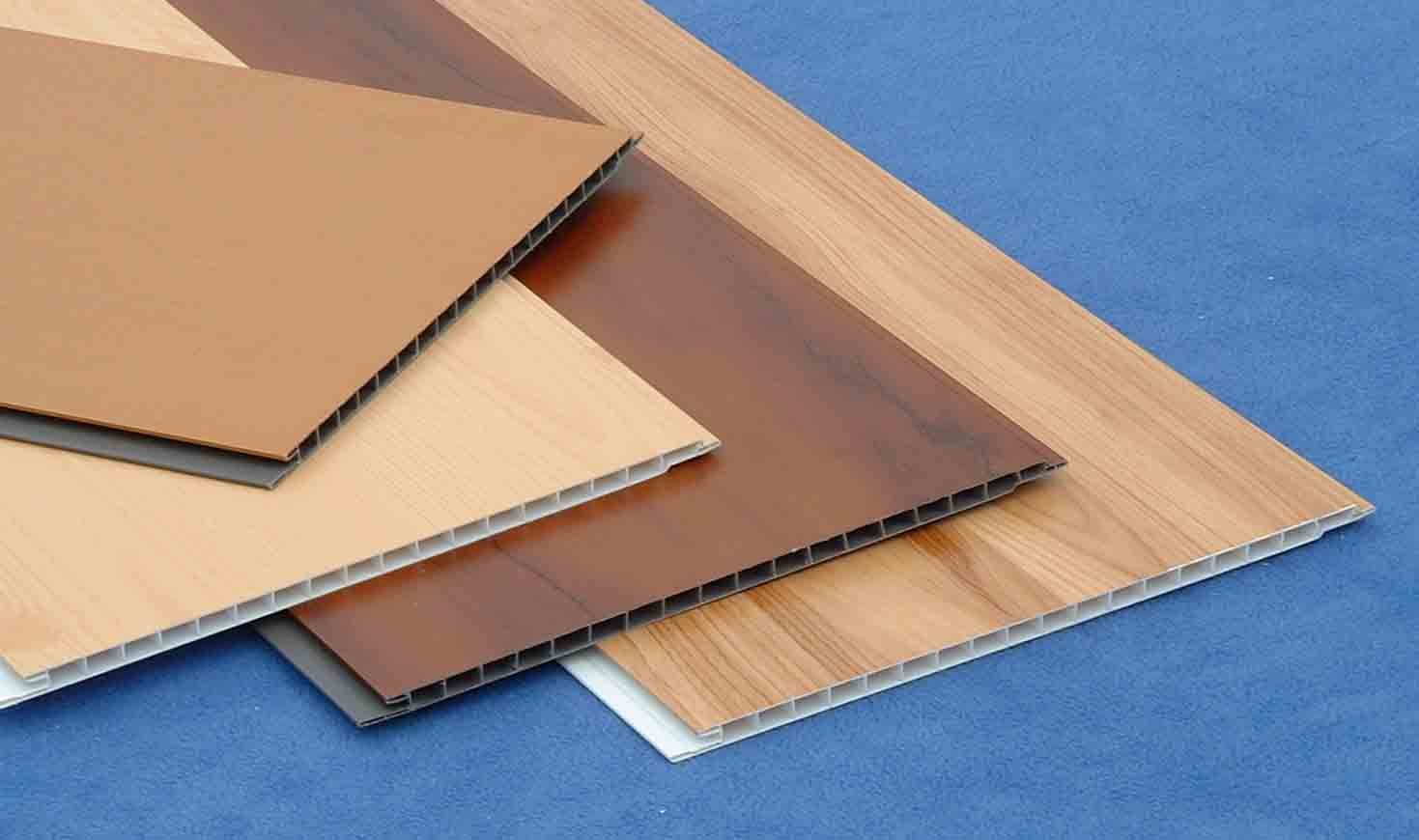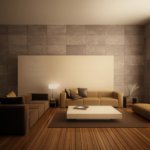Choosing the right paneling material is crucial for home interiors, as it affects durability, aesthetics, and maintenance. Wooden panels and PVC panels are two popular choices, each with distinct advantages and limitations. Understanding their differences will help you make an informed decision. For expert guidance on home materials, visit Architectural Digest, where professionals discuss the latest interior trends.
1. Material Composition and Durability
Wooden panels are made from natural wood or engineered wood products like plywood and MDF. They offer a warm, classic look and are known for their strength and longevity.
- Wooden panels require regular maintenance to prevent damage from moisture and pests.
- They provide excellent insulation, making them a great choice for homes in colder climates.
PVC panels, on the other hand, are made from polyvinyl chloride, a type of plastic that is lightweight and resistant to moisture.
- These panels are highly durable, water-resistant, and do not warp or rot over time.
- They are ideal for high-humidity areas like bathrooms and kitchens.
For more insights on material durability, check out HGTV, where professionals review home improvement materials.
2. Aesthetic Appeal

Wooden panels exude a timeless, elegant appeal, adding warmth and sophistication to any space.
- They come in various finishes, including polished, stained, or painted options.
- Customization options are extensive, allowing for intricate carvings and unique patterns.
PVC panels, while modern and versatile, lack the natural warmth of wood.
- They are available in various colors, textures, and printed patterns that mimic wood, stone, or marble.
- While aesthetically pleasing, they may not provide the same luxurious feel as natural wood.
For more ideas on home aesthetics, visit Better Homes & Gardens, where experts share interior styling tips.
3. Installation and Maintenance
Installing wooden panels requires professional expertise, as they need proper framing and finishing.
- Maintenance involves periodic polishing, termite treatment, and moisture control to prevent swelling and cracking.
- Wooden panels are more prone to damage from water exposure and require careful upkeep.
PVC panels are much easier to install, as they come in ready-to-fix designs.
- They require minimal maintenance—regular dusting and occasional cleaning with a damp cloth suffice.
- Being water-resistant, they do not require additional treatments for moisture protection.
For installation tips, visit Elle Decor, where interior experts discuss practical home solutions.
4. Cost Comparison

Wooden panels tend to be more expensive due to the cost of natural wood and the labor-intensive installation process.
- High-quality wood panels are a long-term investment but can significantly increase the value of a property.
- If budget is a constraint, engineered wood options like MDF can provide a cost-effective alternative.
PVC panels are more affordable, making them a budget-friendly option for home decor.
- They offer durability at a lower price point and are an excellent choice for temporary or rental homes.
- Since they require minimal upkeep, they reduce long-term maintenance costs.
For a breakdown of home material costs, visit The Spruce, where experts provide cost-effective home renovation insights.
Conclusion
Both wooden and PVC panels have unique benefits, and the choice depends on your budget, aesthetic preference, and maintenance capacity. Wooden panels provide a classic, elegant look with long-term durability, while PVC panels offer affordability, easy maintenance, and water resistance. By carefully evaluating these factors, you can choose the best paneling solution that complements your space and lifestyle.
Also Read : Before & After: Transforming a Space into a Modern Eclectic Haven





